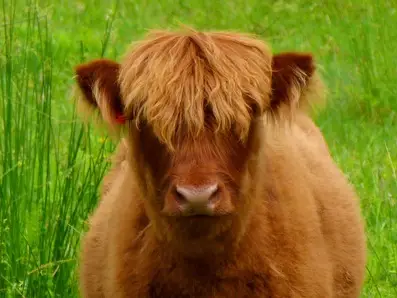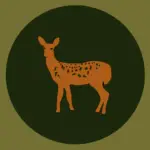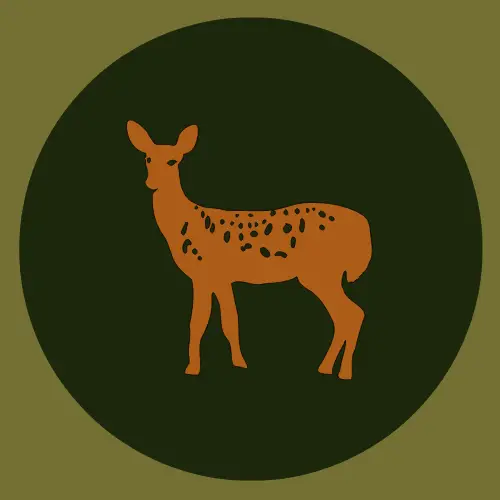Highland Cattle - Origin, uses, availability, fun facts, and a lot more

What is a Highland Cattle?
The highland cattle, also known as the Scottish Highland Cattle, Highlander Cattle, Hardy Breed Cattle, or simple Highlands, are a Scottish breed of rustic cattle. They are native to the Scottish Highlands and Scotland’s Outer Hebrides islands but can easily be found throughout Europe, North America, and Australia. These cattle are herbivores (graminivores) and consume a variety of vegetation, which includes leaves, flowers, and stems, but their favorite food is grass. They are highly valued for their role in managing vegetation in some areas and maintaining biodiversity due to their conservation grazing.
Profile
Zoological Name | Bos taurus taurus |
Family | Bovidae Family |
Areas | Scotland, Europe, North America and Australia |
Category | Herbivore, Graminivore |
Length | Between 3 and 4.5 feet |
Age | 15-22 years |
Build | strong, muscular build and long horns |
Ability | keen sense of smell, and well adapted to harsh weather conditions |
(Profile of Highland Cattle)
Appearance
They are known for their distinctive looks, as they have long horns, shaggy hair, and a double layer of waterproof coat, which helps them protect from predators and easily adapt to harsh climate conditions and rugged terrain. Their coat is the longest among other cattle breeds and varies in color from dun to black, white, red, yellow, and silver. They shed their hair in the spring and grow less hair in the summer, which makes them adjust to various habitats and conditions.
What is the average size of Highland cattle?
They are medium-sized cattle that, on average, weigh between 400 – 600 kg, and bulls weigh 700 – 1000 kg.
How long do Highland cattle live?
Their average lifespan is between 10 – 20 years. If they are properly cared for and managed, some of them can live up to 22 years or more.
What are highland cattle used for?
Traditionally, highland cattle are primarily used for their meat, which is lean, tender, and full of flavors and textures. They weigh between 450kg and 800kg. Apart from this, they are used for vegetation management as their grazing behavior helps maintain and improve pasturelands, woodlands, and other landscapes. Their use in conservation grazing projects plays a vital role in promoting biodiversity and maintaining the health of certain habitats. Due to their hardy nature, they can graze in harsh and rugged environments easily, which other cattle breeds cannot reach.
In the past few years, they have become popular in agriculture and cattle shows and events. People simply love their long horns and shaggy coats. Knowing their unique capability of thriving in challenging conditions also amazes people.
So in short, the Highland cattle serve a dual purpose, being utilized for meat production and environmental management. They are also appreciated for their looks.
Are Highland cattle easy to handle?
The short answer is yes; they are! They are docile animals with zero aggression and are easy to keep and manage. They are known as the most gentle ones as compared to the other breeds of cattle and have a great understanding even within their herds. They enjoy the company of humans and love to approach walkers to seek affection. According to the archaeological record, people have been keeping them as pets since ancient civilizations, apart from farming purposes. Even though they are known to be gentle, it is still important to keep in mind that each animal can vary in temperament, so it’s always better to take the necessary safety measures when handling them.
Where to buy highland cattle?
It depends on where the buyer lives. It is always best to locate reputable breeders or sellers in the same area or region. People can easily buy highland cattle from various places, such as livestock farms, cattle auctions, or online e-commerce platforms that connect buyers and sellers of different types of livestock. In the US, Miles Smith Farm and Elm Hollow Farm are popular choices. For auctions, the Scottish Auction and Cow Match are in demand.
Are Highland cattle good for milk production?
This fluffy breed cannot produce as much milk as a production cow. However, on average, they produce 2 gallons per day, enough for small-scale milk production or personal use. Their milk has almost 10% fat, which is attractive for farmers or owners. This fat can be used as butter, ghee, whey, skim milk, cheese, cream, paneer, or whole milk powder.
Are Highland cattle good for meat production?
Yes, their meat falls into the category of premium beef as it’s lean, well-marbled, full of flavor, and has a high protein content. The meat is also pricy because it’s full of iron and lower in cholesterol and fat than even chicken, according to the test results of many experts.
Are Highland cattle suitable for small farms?
They are highly low-maintenance cows and are excellent choices for small farms, mini petting zoos, or hobby farms. They are considered environmentally sustainable, especially in those areas where growing alternative food is unsuitable, such as low-temperature or high-rainfall places. They are multi-purpose cattle that produce milk, premium quality meat, and fiber with low cost and effort. Highlanders can fit in diverse farm operation styles but they are not considered suitable for large-scale commercial meat production like other large cattle breeds.
Highland Cattle vs Scottish Highland Cattle
Highland cattle and Scottish highland cattle are the names of the same cattle breed. Therefore, there is no difference between them, as both names refer to the same breed.
Highland Cattle vs Miniature Highland Cattle
Highland cattle and miniature Highland cattle are two different breeds of cattle. They have a few similarities but also distinct characteristics.
Characteristics | Highland Cattle | Miniature Highland Cattle |
Look | Long, shaggy hair, large horns, and muscular build | They are a smaller version of the traditional Highland cattle |
Size | Upto 800 kg for males and 550 kg for females | Between 180 gk and 360 kg |
Weather adaptability | Well-adapted to harsh weather conditions | High adaptability to both cold and warm conditions |
Temperament | Friendly and docile temperament | require additional care and attention due to their size and health issues |
Farmers Choice | Used for the large and traditional breeding |
(Highland Cattle vs Miniature Highland Cattle)
How do Highland cattle cope with harsh climates?
Yes, these cattle are easily able to cope with not only harsh climates but also various other climates. Mini highland cattle have high adaptability in cold and warm places as compared to regular highland cattle. However, it is recommended to keep both mini highlanders and regular highlanders in colder climates because of their thick fur and shaggy coats.
Do Highland cattle require special care or attention?
They are known as a low-maintenance breed. But they still need some care due to their long hair and thick fur, which often gets dirty. Here are a few things to consider:
Shelter
They require shelter, especially during extreme weather conditions.
Pasture and grazing
Although they are excellent grazers, they still require access to good-quality pasture with a variety of grasses and forage.
Water source
They require a reliable source of clean drinking water, just like any other animal.
Minerals and supplements
Providing a balanced mineral supplement is crucial for Highland cattle, and a local vet can help give a specific mineral requirement plan based on food quality and environment.
Health care
They should have access to health care, which usually includes regular vaccinations, deworming, and over health checks. Due to their long horns and shaggy coats, they may require frequent trimming to prevent injury or entanglement.
Can Highland cattle be kept with other livestock?
Yes, they can be kept with other livestock. They have a high tolerance for other breeds and fit well with sheep, goats, and horses due to their same biological needs.
Are Highland cattle prone to any specific health issues?
They have an amazing immune system and body structure. Their low-stress temperaments also play a great role in keeping them healthy. However, there are a few health concerns, such as heat stroke, overgrown hooves, parasites, eye problems, respiratory issues, hypothermia, frostbite, and calving difficulties, so it’s better to keep them checked by the veterinary doctor regularly.

